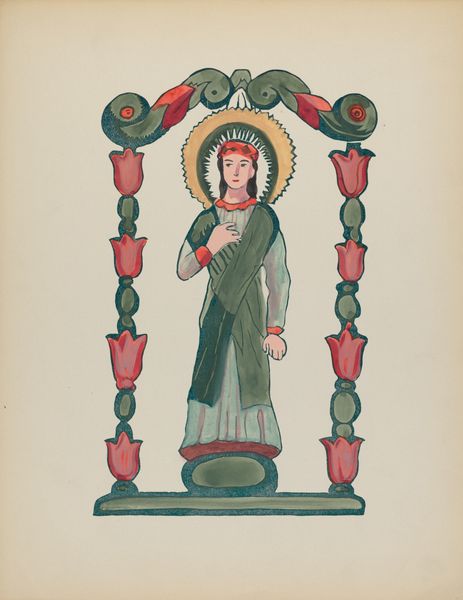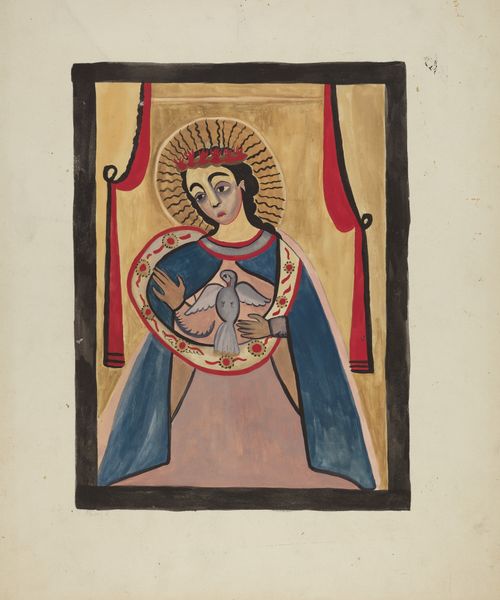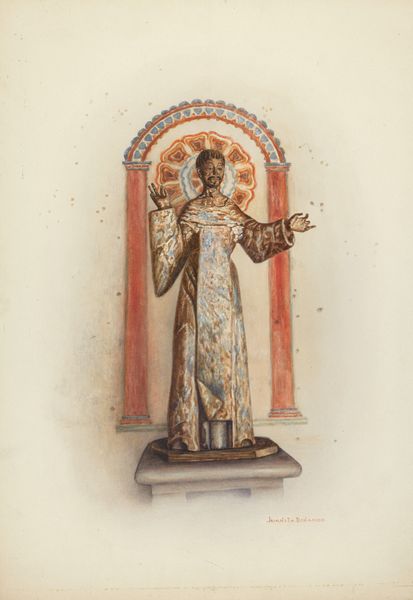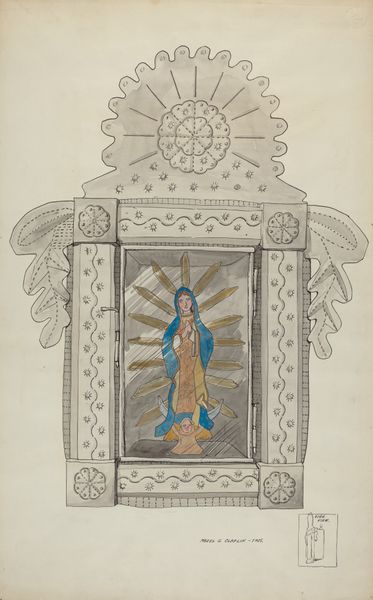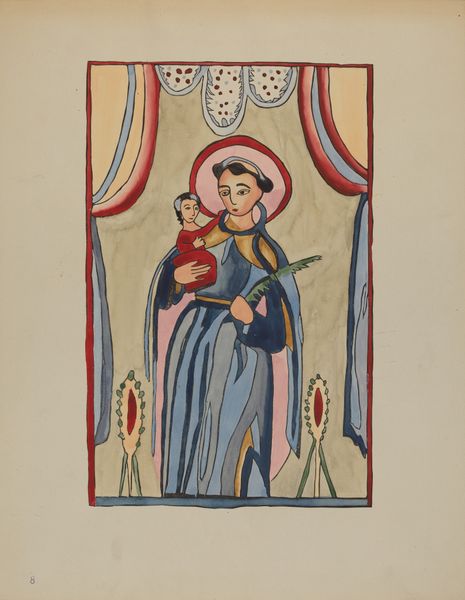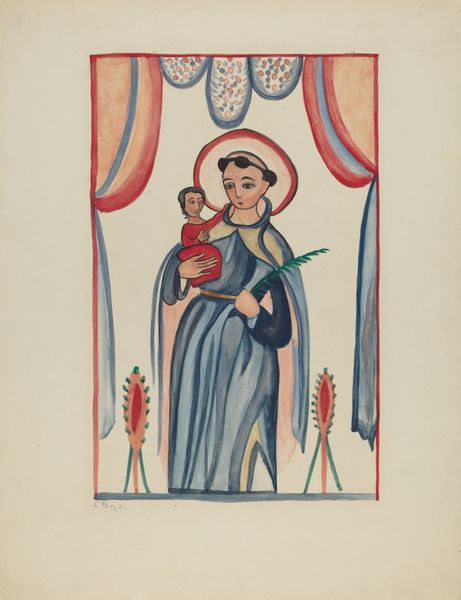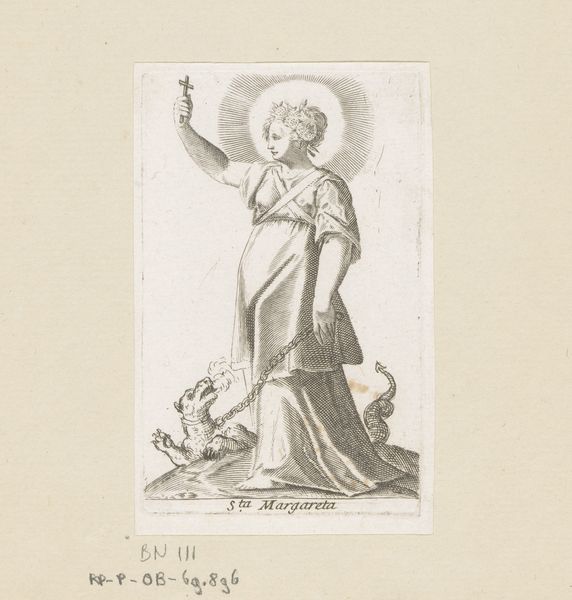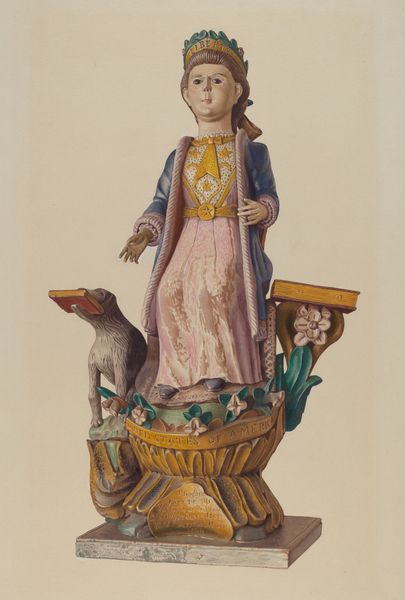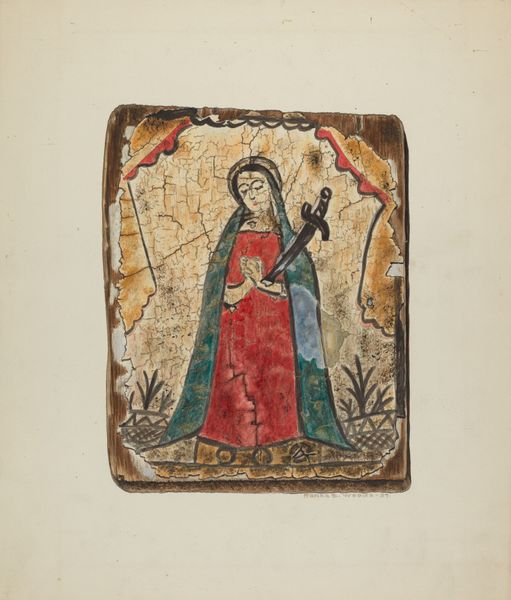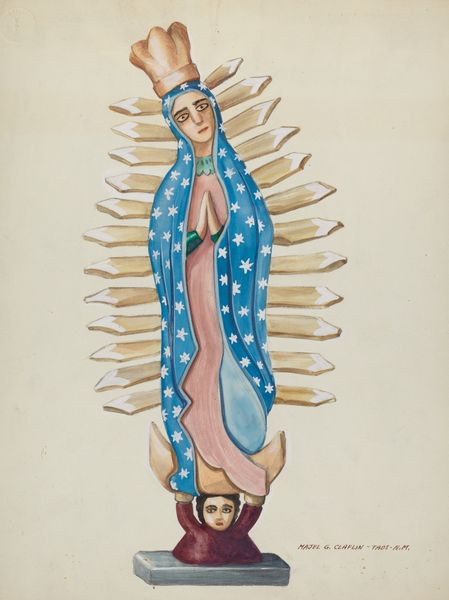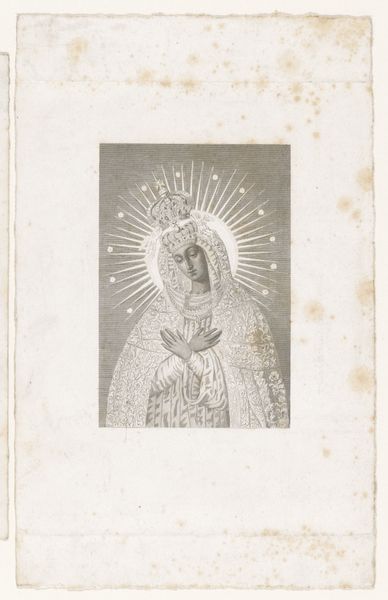
painting, paper
#
painting
#
caricature
#
figuration
#
paper
#
folk-art
Dimensions: overall: 42.2 x 24.3 cm (16 5/8 x 9 9/16 in.)
Copyright: National Gallery of Art: CC0 1.0
Editor: So, this is a watercolor and paint drawing titled "Bulto-Figure of Saint" from around 1935-1942, by E. Boyd. It feels like a depiction of folk art, and almost a caricature with the frame around the saint. What do you make of its significance, in terms of its place in art history? Curator: It's interesting you pick up on the folk-art elements. This connects to a vital moment in American art history, doesn’t it? Boyd was deeply involved in the Spanish Colonial Arts Society, which significantly shaped the perception and marketing of southwestern art. Do you think this representation reinforces or challenges traditional religious iconography? Editor: That's a great question. I suppose it challenges it, somewhat? It is less idealized than what I would expect from typical religious imagery, more human perhaps? And that frame is so…folksy. Curator: Exactly. And think about who was consuming this art. Organizations like the Spanish Colonial Arts Society played a huge role in defining "authentic" southwestern art for a tourist market, often romanticizing the past. The scale too…miniatures like this were perfect souvenirs. Do you think there might be political implications in that process of defining authenticity? Editor: Definitely. Deciding what's “authentic” means someone’s culture is being defined by others, and that can be a way to control narratives and exploit traditions. It is interesting to look at this artwork and think of how art, tourism, and cultural identity are interwoven. I never thought of it that way. Curator: It highlights the importance of critically examining the institutions and social forces that shape art and its reception, and how these things continue to shape identity and socio-political realities even today. Editor: I agree, it has shifted my understanding of art beyond just the aesthetic and the artist’s intent. I can now appreciate it from a much wider socio-historical context.
Comments
No comments
Be the first to comment and join the conversation on the ultimate creative platform.
